Knife Item Number: E7419-0 from the National Museum of Natural History
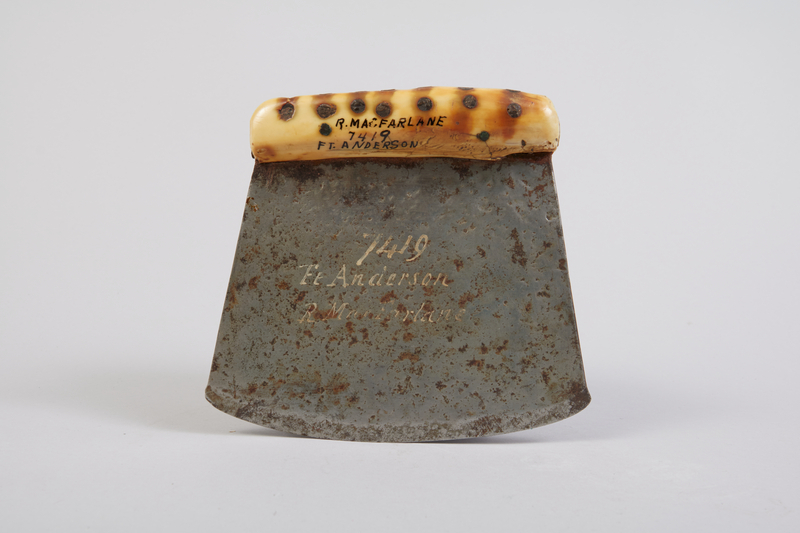
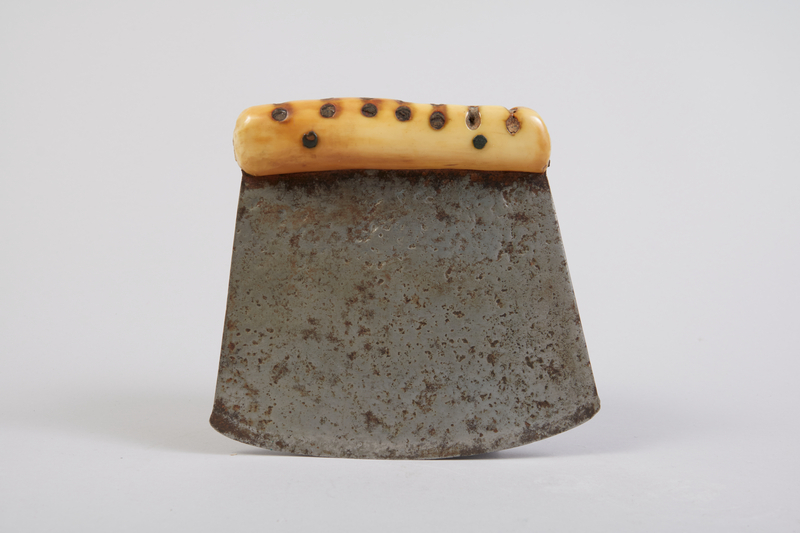

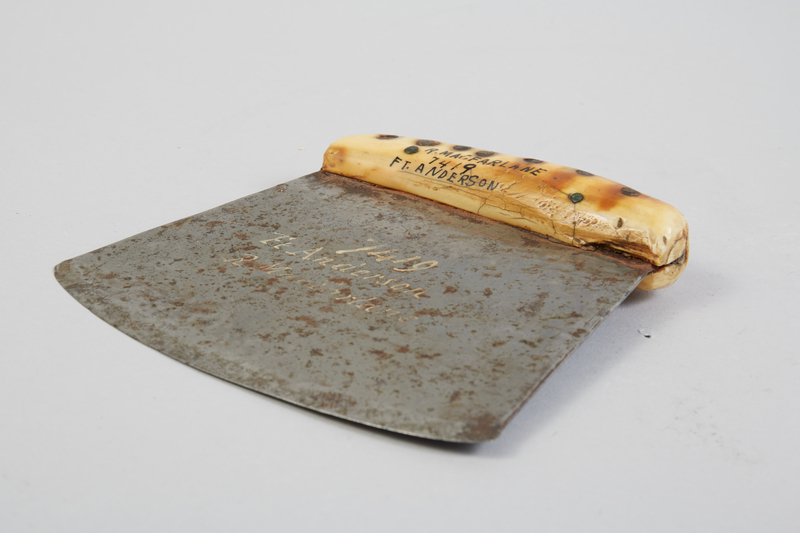

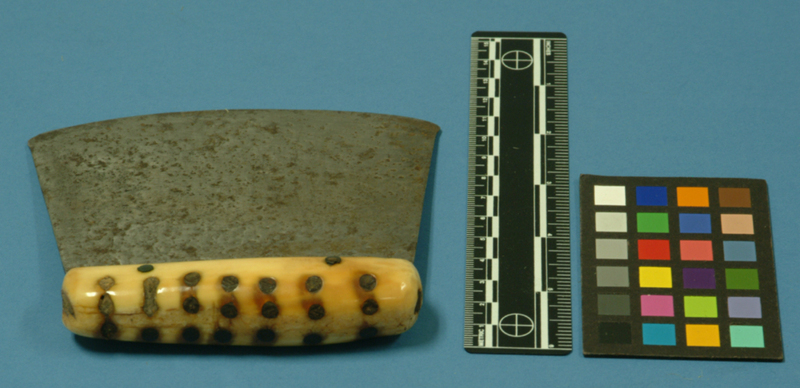


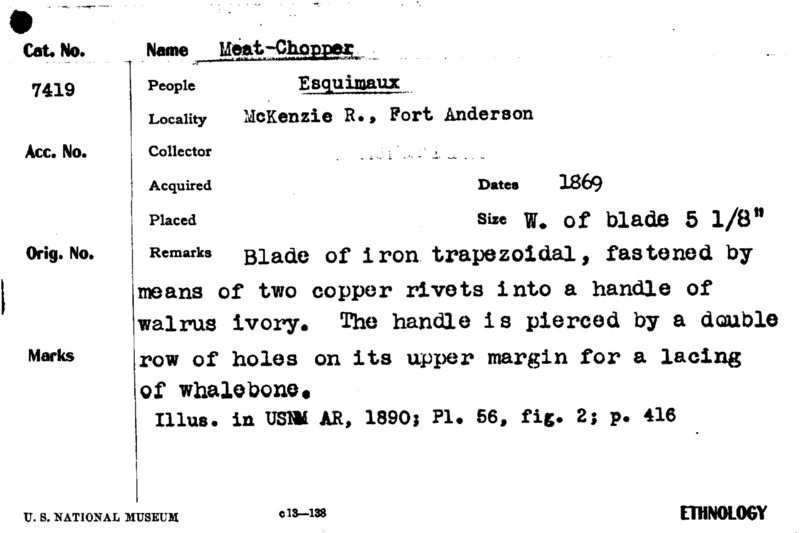
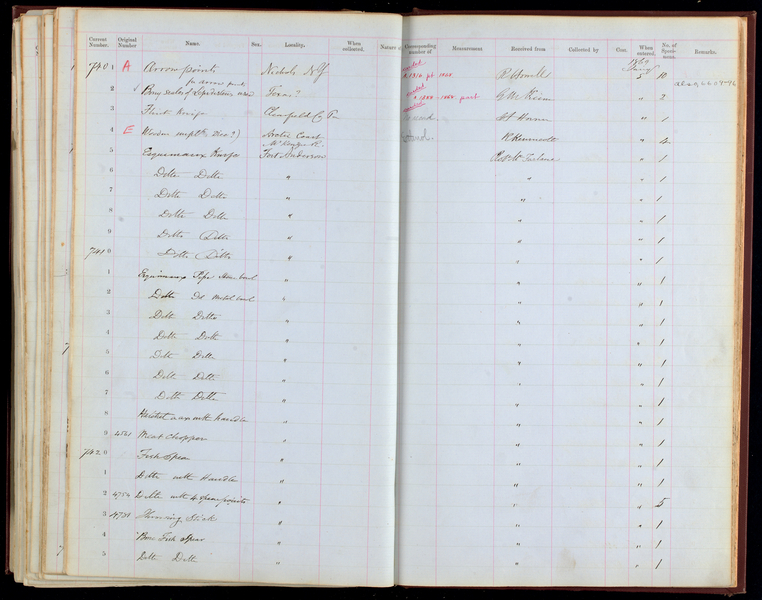
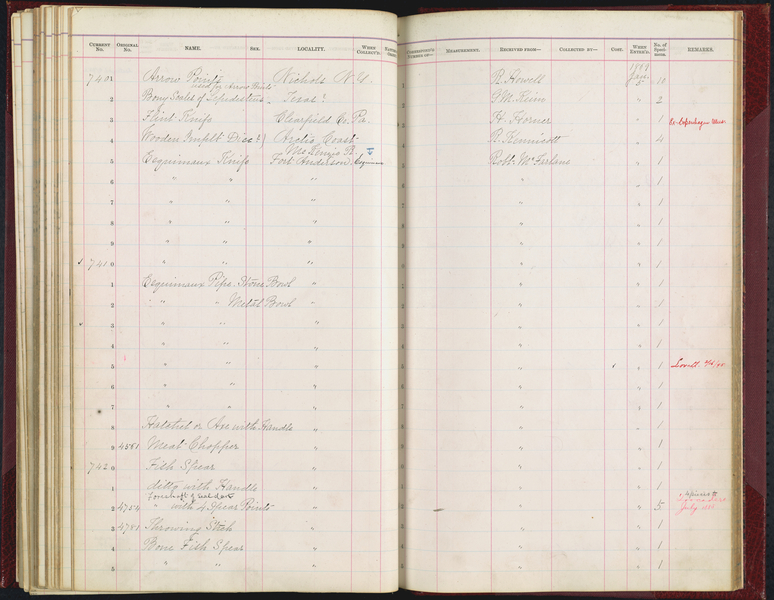
Notes
FROM CARD: "MEAT CHOPPER. BLADE OF IRON TRAPEZOIDAL, FASTENED BY MEANS OF TWO COPPER RIVETS INTO A HANDLE OF WALRUS IVORY. THE HANDLE IS PIERCED BY A DOUBLE ROW OF HOLES ON ITS UPPER MARGIN FOR A LACING OF WHALEBONE. ILLUS. IN USNM AR, 1890; PL. 56, FIG. 2; P. 416."Source of the information below: Inuvialuit Pitqusiit Inuuniarutait: Inuvialuit Living History, The MacFarlane Collection website, by the Inuvialuit Cultural Resource Centre (ICRC), Inuvik, N.W.T., Canada (website credits here http://www.inuvialuitlivinghistory.ca/posts/12 ), entry on this artifact http://www.inuvialuitlivinghistory.ca/items/142 , retrieved 1-27-2020: Ulu with an iron blade and ivory handle. The handle has a slot cut into the bottom edge into which the blade has been inserted. Two copper rivets help secure the blade to the handle. Two sets of seven seven intersecting holes drilled through the handle show staining, indicating that baleen had been laced through the holes to provide a grip. The blade has a curved edge that has been sharpened by filing along both sides. More information here: http://www.inuvialuitlivinghistory.ca/item_types/58: An ulu is a knife with a crescent-shaped blade attached to a handle made of wood, bone or antler. The design of an ulu ensures that the cutting force is centred more over the middle of the blade than with an ordinary knife. Ulus are used for skinning animals, scraping skins, cutting hides when sewing as well as for other household tasks. They are sometimes called 'women's knives' since they usually are associated with women's tasks.
Item History
- Made in Northwest Territories, Canada
- Collected in Northwest Territories, Canada
- Received from Roderick R. MacFarlane on January 7, 1869
What
- Name
- Knife
- Identification Number
- E7419-0
- Type of Item
- knife
Who
- Culture
- Eskimo, Inuit and Inuvialuk
- Received from
- Roderick R. MacFarlane
Where
- Holding Institution
- National Museum of Natural History
- Made in
- Northwest Territories, Canada
- Collected in
- Northwest Territories, Canada
When
- Acquisition Date
- on January 7, 1869
Other
- Accession Number
- 69A00012